The Ultimate Sheet Metal Gauge Chart: Your Guide to Steel, Stainless, Aluminum, Brass, and More
Classification:BLOG
Engineers may need a steel gauge chart to determine the required dimensions of the material to be machined, to understand the gauge system and familiar with the thickness for specific gauge such as 16 gauge thickness, here we’ll explain what is sheet metal gauge (thickness), how does it work, and the sheet metal gauge chartfor stainless steel, sheet steel, galvanized steel, aluminum, brass, and copper.
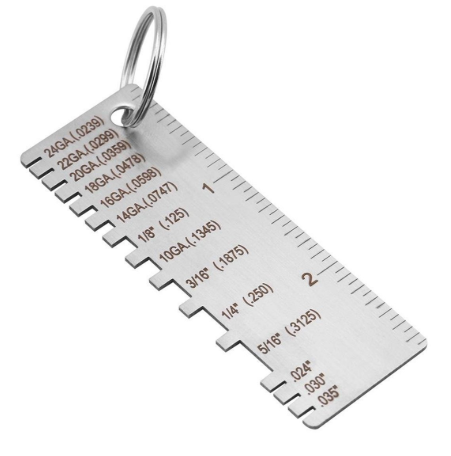
What is Sheet Metal Gauge? - Metal Gauge Thickness
A sheet metal gauge/gage is an indication of the standard thickness of specific sheet metal materials, such as steel, aluminum, and copper. The larger the gauge number, the thinner the metal (not applicable for zinc). There are also gauge numbers like 000000 and 0 for aluminum and stainless steel, the metal thickness of 000000 gauge is larger than 0 gauge.
How Does Sheet Metal Gauge Work?
How to use a gauge chart? A metal gauge chart will contain the gauge number and the corresponding thickness of certain metal, in inches or millimeters. You can use the chart to confirm the metal thickness for the CNC machining process or material selection. The sheet metal gauges are neither standard nor metric, the numbers are independent of measurement systems and do not mean actually measured value. In addition, the same gauge number for different materials presents different thicknesses, for example, 37 gauge stainless steel is 0.0066 inches thick, while 37 gauge aluminum is 0.0045 inches thick.
There are different gauge size standards, the equivalent thickness for each gauge is different, the standard is developed according to the weight of the sheet for a given material. The Manufacturers’ Standard Gage provides the thicknesses for standard steel, galvanized steel, and stainless steel. The Brown and Sharpe Gage, also known as the American Wire Gage (AWG), is used for most non-ferrous metals, such as Aluminum and Brass. In the UK, the Birmingham Gauge (BG) is used for metals in strip & tubing and a standard exists for Zinc in which a higher gauge number indicates a thicker sheet.
Related Read: Plastic Gauge Thickness Chart
Steel Metal Gauge Chart for Different Materials
Check out a complete list of metal gauge chart for sheet steel, galvanized steel, stainless steel, aluminum, brass, and copper, to fast convert gauge to inches, or gauge to millimeter (mm). The most commonly used gauge thickness chart is the sheet metal gauge for steel.
1) Sheet Steel Gauge Chart
2) Galvanized Steel Gauge Thickness Chart
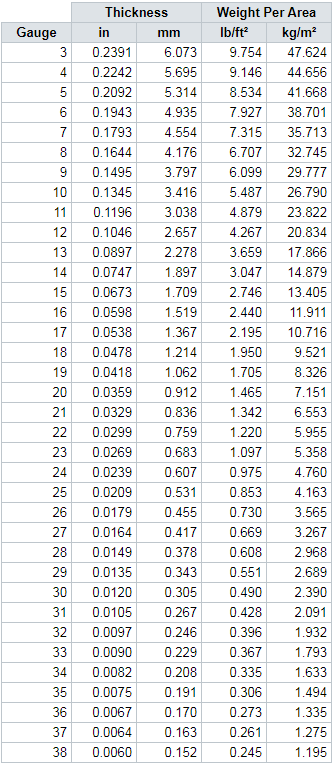
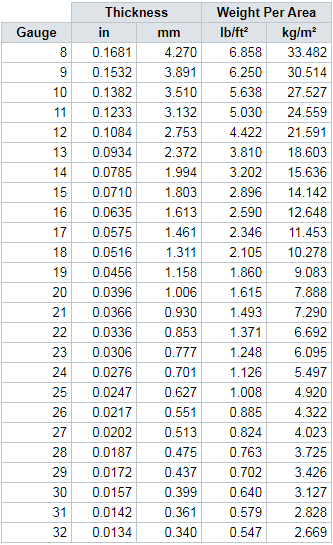
3) Stainless Steel Gauge Chart
4) Aluminum Gauge Chart
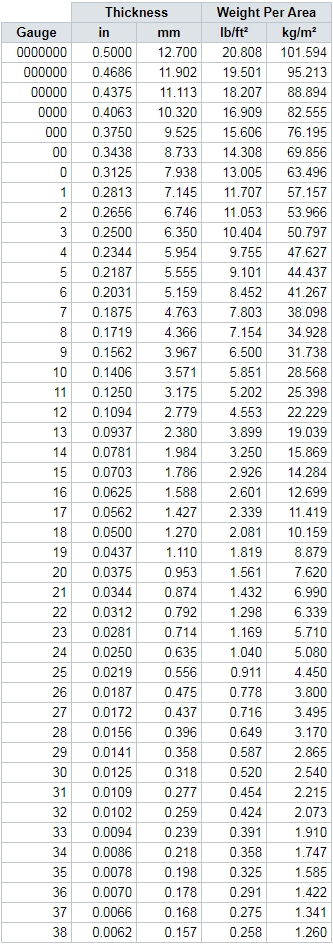
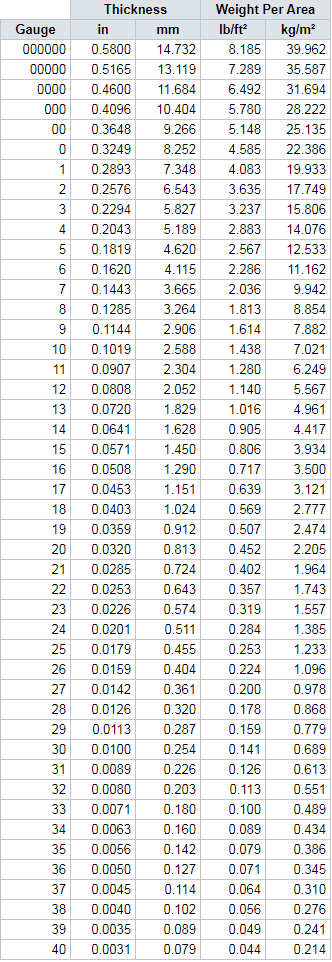
5) Brass Gauge Size Chart
6) Copper Gauge Chart
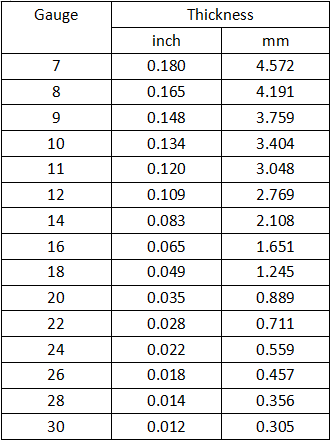
Our most popular products
